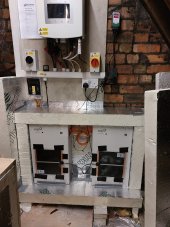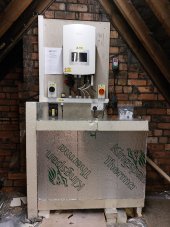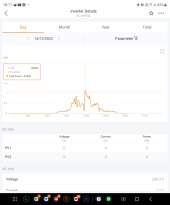Sorry to have been AWOL from the thread for a while (kitchen remodel before xmas became the priority under direction of the house boss

)..
Admiring the insulated environments people have been creating however...
I had decided to push back to the contractors ... and I have just had the Senior installation engineer from ENVOENERGY (who we purchased the system from) here at the house (he drove down from Manchester) after a rather ranty phone conversation from me to their MD...
He confirms
100% they never install in loft spaces, and all training courses, data from battery manufactures etc state this- cold environment being one issue, but accessibility and potential fire hazard being another.
So the BS I was given by the subcontract installers that they "
always install in lofts and have
never had this issue in 20 years and there must be an issue with Solis " is total sh1t! ...
Basically lazy sub contract installers find it easier, cheaper and faster to make the electrician run a longer cable inside the house from loft to Consumer unit, rather than having to extend the dc cables from panels to inverter outside the house in conduit.
In our case this also had the side effect of him drilling through a soil stack and having to have a plumber round at their cost to repair, with a bathroom out of action for a week ...
He will return
himself to move (FOC) both battery and inverter to a downstairs utility space we have right next door to the consumer unit hopefully next week, running DC cables properly outside the house.
Hindsight is great, but this should have been discussed with us at time of install or before.. we had little to no knowledge of the whole Solar project then ... lesson learnt for us and feedback will be given to the MD re the subcontractors they used... I doubt they will be getting anymore work.
As has been said on the thread -
keep them in the house where you can get to them and manage their environment .. simples.
Re temp data (cannot state how accurate ambient temp is as using a UBIBOT sensor) - average ambient temp 14/11 to 29/11 was 12.5C with avg charge rate between 30a and 50a when yielding energy. Since cold snap 30/11 to today - average temp in loft space 7.5c (and at times much lower) with avg charge rate 10a-12.5a.
We have "lost" approx 54kw energy to the grid as the days when we had sun and it was cold the battery only charged at around 600w... rest disappeared .. we didn't have the export payments set up with Octopus as were waiting on install paperwork etc ...
Anyhow, long and sometimes emotional journey but hopefully all resolved in a week or so ... I am now preaching to anyone who will listen - if you get solar ensure the battery and inverter are in the house somewhere!








